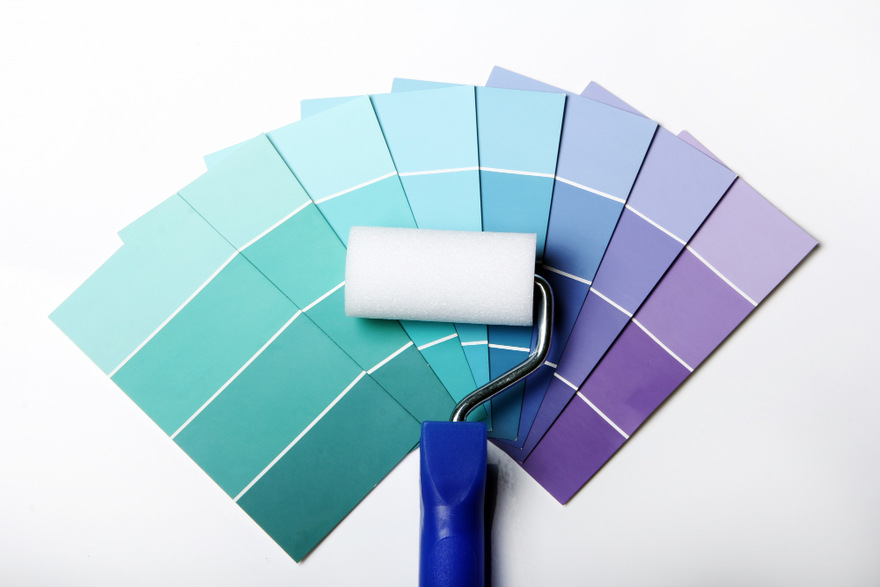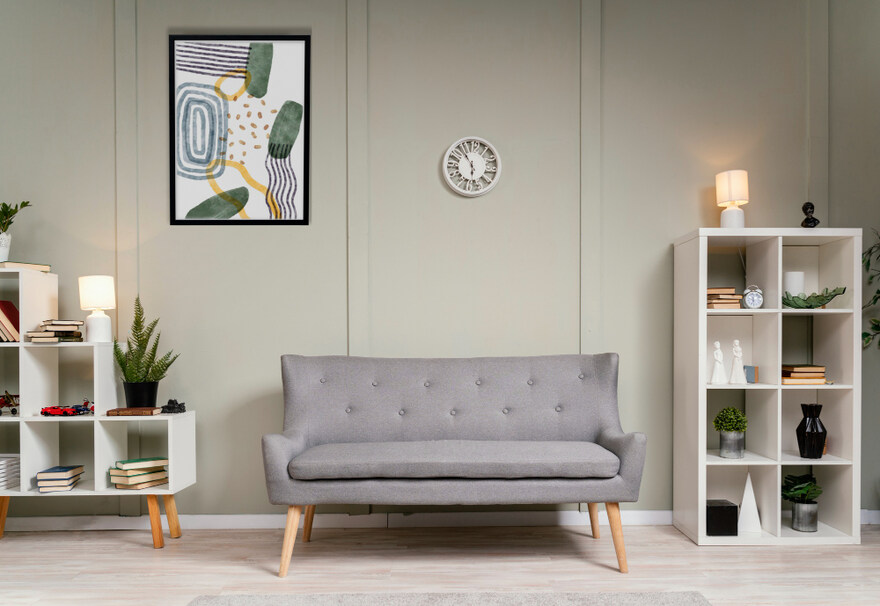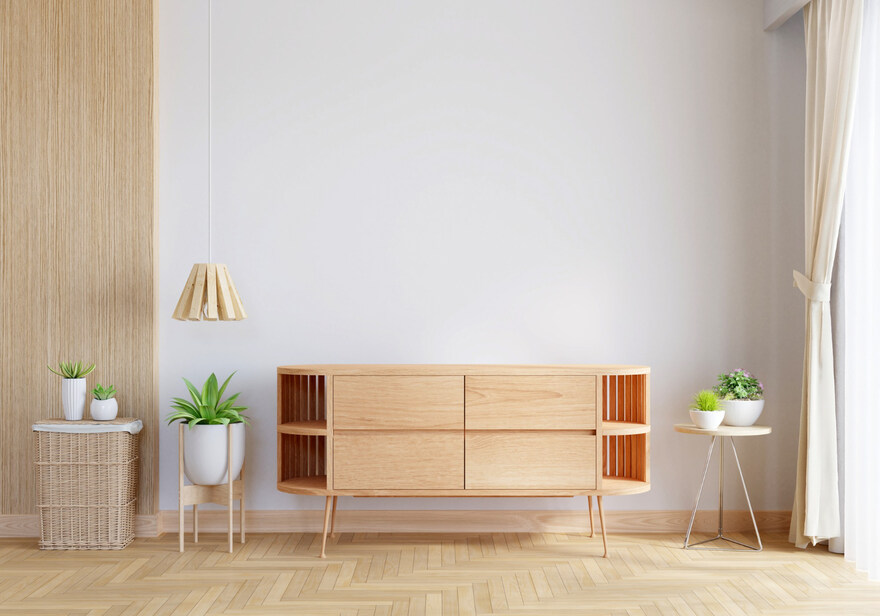Menu

When it comes to designing a home, it’s crucial to consider the needs of all its inhabitants. For those with visual impairments, the choice of paint design can significantly affect their daily lives. Professional house painters in Milford, CT, understand this need and offer specialized services to make your home more accessible.
✔️ High-contrast color schemes, such as black and white, are essential for visually impaired individuals as they help in outlining spaces and objects more clearly.
✔️ Textured paints like sand texture and popcorn texture offer a tactile experience, making it easier for visually impaired individuals to navigate spaces.
✔️ Specialized paints maximize natural light in a room, enhancing visibility and making spaces more accessible for those with visual impairments.
✔️ Incorporating braille into wall designs serves aesthetic and functional purposes, making spaces more interactive and inclusive.
Color is not just a matter of aesthetics; it serves a functional purpose, especially for individuals with visual impairments. Skilled house painters in Milford, CT, often emphasize the importance of choosing the right color schemes when painting homes for those with visual challenges. Bright and contrasting colors aid in outlining spaces and objects, making navigation within the home much easier.
Skilled house painters in Milford, CT, such as Milford Professional House Painters, are increasingly becoming aware of the need to consider the visually impaired when choosing color schemes. They often consult with occupational therapists and experts in visual impairments to ensure that their chosen colors serve a functional purpose. This collaborative approach ensures that the home becomes a safer and more navigable space for everyone.
Contrast is equally crucial in making a home more accessible. The best house painters often recommend using contrasting colors for walls and trims to help define spaces clearly. For instance, a light-colored wall with a dark trim can make it easier for someone with a visual impairment to distinguish where the wall ends and the floor begins.

Several research papers and studies support the importance of color and contrast in aiding the visually impaired. The best house painters in Milford, CT, can use this data to make informed decisions when choosing colors for a home.
Here are some practical tips from trusted house painters on how to use color and contrast effectively:

High-contrast color schemes are a cornerstone in the world of interior design, especially when creating spaces accessible to people with visual impairments. These color schemes involve using colors that stand out distinctly against each other, making it easier for individuals to differentiate between various elements in a room. While the best house painters have a wide palette of colors, black-and-white remains a classic example of a high-contrast color scheme.
When we talk about high-contrast color schemes, we’re essentially discussing the science of how our eyes perceive color. The human eye is more sensitive to changes in contrast rather than changes in the hue of colors. This is why the best house painters often recommend high-contrast color schemes for spaces that need to be more accessible.
The black-and-white color scheme is often the most straightforward example of high contrast. The reason is simple: black absorbs all colors, while white reflects them. This creates a contrast ratio of 21:1, making it the highest possible contrast between two colors. Skilled house painters frequently use this contrast ratio as a benchmark when considering other color combinations.
While black and white are the most commonly used, skilled house painters often employ other high-contrast color combinations. Some of these include:
Type of Texture | Key Ingredients | Tactile Experience | Common Uses | Notes from House Painters |
Sand Texture | Sand particles | Gritty | Outdoor spaces, hallways | Often used in high-traffic areas |
Popcorn Texture | Styrofoam beads | Bumpy | Ceilings | Effective for sound-dampening |
Venetian Plaster | Lime and marble | Smooth | Formal rooms like dining and living rooms | Gives an appearance of depth |
The type of wall finish can also impact the effectiveness of a high-contrast color scheme. Glossy finishes can reflect light, which may reduce the perceived contrast. Professional house painters usually recommend matte finishes to maintain the integrity of the high-contrast scheme.
Patterned walls can add complexity to a high-contrast color scheme. For example, if you have a black wall with white patterns, the overall contrast may be diluted. Professional house painters often suggest keeping patterns simple and minimalistic when using high-contrast colors.
Lighting can either enhance or diminish the effectiveness of a high-contrast color scheme. Professional house painters usually thoroughly analyze a room’s natural and artificial lighting before recommending specific colors. For example, a room with ample natural light may benefit from a slightly muted high-contrast scheme to prevent the colors from appearing too harsh.
Textured paints have been a staple in the interior design industry for years, but their utility goes beyond mere aesthetic appeal. Especially for individuals with visual impairments, textured paints can serve as tactile cues, helping them navigate spaces more comfortably. Professional house painters often incorporate textured paints into their projects to add beauty and functionality to a room.
When we talk about textured paints, we’re delving into tactile psychology. The human sense of touch is incredibly sensitive and can detect even the most minor variations in texture. This is why the best house painters and interior designers are increasingly exploring the use of textured paints to create environments that are not just visually appealing but also tactilely stimulating.
There are various types of textured paints that the best house painters commonly use, each offering a unique tactile experience:
Type of Texture | Key Ingredients | Tactile Experience | Common Uses | Notes from House Painters |
Sand Texture | Sand particles | Gritty | Outdoor spaces, hallways | Often used in high-traffic areas |
Popcorn Texture | Styrofoam beads | Bumpy | Ceilings | Effective for sound-dampening |
Venetian Plaster | Lime and marble | Smooth | Formal rooms like dining and living rooms | Gives an appearance of depth |
The application of textured paint is a specialized skill that the best house painters have mastered over the years. It often involves multiple coats and specialized tools like trowels, sponges, or paint rollers. The complexity of the application process often depends on the type of texture and the desired result.
For individuals with visual impairments, textured paints can serve as tactile cues. For example, a wall leading to the bathroom could be painted with a sand texture, while the living room wall could have a Venetian plaster finish. These tactile differences can help visually impaired individuals navigate their homes more easily, making textured paints a functional choice in addition to being an aesthetic one.
One of the concerns when opting for textured paints is their durability and maintenance. Textured surfaces can be more challenging to clean compared to smooth surfaces. However, skilled house painters often recommend high-quality textured paints that are durable and easy to clean, ensuring that the beauty and functionality of the texture last for years.
Textured paints can be more expensive than regular paints due to the specialized application process and the additional materials used. However, when you consider the dual benefits of aesthetics and functionality, many consider the cost justified. Professional house painters can provide detailed estimates based on the type of texture and the size of the area to be painted.
With growing awareness about environmental sustainability, the best house painters are now offering eco-friendly textured paint options. These paints are water-based and contain low volatile organic compounds (VOCs), making them a greener choice for residential and commercial settings.

The concept of color-coding rooms is gaining traction, especially in homes where individuals with visual impairments reside. The idea is simple yet effective: assign a specific color to each room to facilitate easy identification and navigation. Professional house painters are increasingly consulted for such specialized projects, as they bring the expertise to select the right shades and finishes.
Color coding taps into the psychological power of color to influence mood and behavior. For example, red is often associated with energy and excitement, making it an excellent choice for spaces like the kitchen where activity is constant. On the other hand, blue exudes calmness and is often recommended by experienced house painters for living rooms or bedrooms. Understanding the psychological impact of colors can help in making more informed choices.
Let’s consider a few practical examples to understand how color coding can be implemented:
Color coding can be particularly beneficial in homes with children. For example, a child’s bedroom could be painted in their favorite color, making the room more personalized and easier for the child to identify. Proficient house painters often work closely with parents to choose kid-friendly and functional colors.
One challenge in implementing a color-coding scheme is ensuring smooth transitions between rooms. Abrupt changes can be jarring, so house painters often use gradient walls or color blending techniques to create a more harmonious flow between different spaces.
Using too many colors in smaller homes or apartments can make the space feel cluttered. Proficient house painters usually recommend using lighter shades or sticking to a limited color palette to prevent this.
Some people like to change the color scheme of their rooms according to the seasons. While this involves more frequent painting, it can keep the home feeling fresh and new. Proficient house painters can offer seasonal color palettes that are easy to implement.
Light reflective paints are a game-changer in interior design, particularly for individuals with visual impairments. These specialized paints are formulated to reflect more light, thereby maximizing the natural light available in a room. Trusted house painters are increasingly recommending light reflective paints to make spaces more accessible and easier to navigate for everyone, including those with visual challenges.
Light-reflective paints contain particles that scatter light more effectively than traditional paints. This results in a brighter room without the need for additional artificial lighting. Proficient house painters often use these paints in rooms with limited natural light or in spaces where enhancing visibility is a priority, such as hallways and staircases.
There are several types of light reflective paints that trusted house painters commonly use:
The application process for light reflective paints is similar to that of traditional paints, but trusted house painters often take extra precautions to ensure an even coat. This is because imperfections can be more noticeable due to the paint’s reflective properties. Multiple coats may be necessary to achieve the desired level of reflectivity.
Light reflective paints can be combined with high-contrast color schemes for maximum accessibility. For instance, using light-reflective white paint on the walls and contrasting black for the trim can make a space both bright and easy to navigate. Proficient house painters often use this combination in critical areas like entrances and stairwells.

Braille wall paintings are an innovative concept revolutionizing how we think about interior design and accessibility. These unique installations serve a dual purpose: they are visually appealing and provide a tactile experience that can be particularly beneficial for individuals with visual impairments. By incorporating braille into wall designs, we can create spaces that are not only beautiful but also inclusive.
Braille is a tactile writing system used by the blind or visually impaired. It was invented by Louis Braille, a Frenchman who lost his sight due to a childhood accident. Realizing the limitations of the tactile systems available at the time, he developed Braille as a more efficient and versatile alternative.
In the Braille system, characters are represented by patterns of raised dots arranged in a 2×3 grid. Each grid corresponds to a letter, number, or symbol, allowing various expressions. The dots are small enough to be recognized by a single fingertip, making it possible for users to ‘read’ by running their fingers over the text.
The idea of integrating braille into wall paintings stems from the broader movement towards inclusive design. The aim is to create environments accessible to as many people as possible, regardless of their physical limitations. Braille wall paintings take this a step further by adding an interactive element to the design, allowing visually impaired individuals to ‘read’ the walls and better understand their space.
There are various ways to incorporate braille into wall designs, each offering a unique aesthetic and functional experience:
The functional benefits of braille wall paintings are significant, especially for visually impaired individuals. These installations provide a tactile way to interact with the environment, offering clues about the space and how to navigate it. For example, a braille wall painting in a public building could guide different departments, while one in a home could label individual rooms.
High-contrast and textured paints are generally recommended for visually impaired individuals. These paints can help outline spaces and objects more clearly, making navigation easier.
Choosing the right color involves multiple considerations, including the purpose of the space, the amount of natural light it receives, and the specific needs of the visually impaired individual who will be using it. Consulting with trusted house painters and experts in the field of visual impairment can provide valuable insights into making the best choice.
Textured paints provide a tactile experience, allowing visually impaired individuals to ‘feel’ the walls. This can be particularly useful in public buildings or homes where braille or other tactile indicators provide information. Textured paints like sand texture or popcorn texture can be used to create these tactile experiences.
If you’re looking to make your home or business more accessible and visually appealing, look no further! At Milford Professional House Painters, we specialize in creating designs that are not only stunning but also cater to the needs of visually impaired individuals. From high-contrast color schemes to textured paints and light-reflective options, we’ve got you covered.
554 Boston Post Rd Unit 109, Milford, CT 06460, United States
